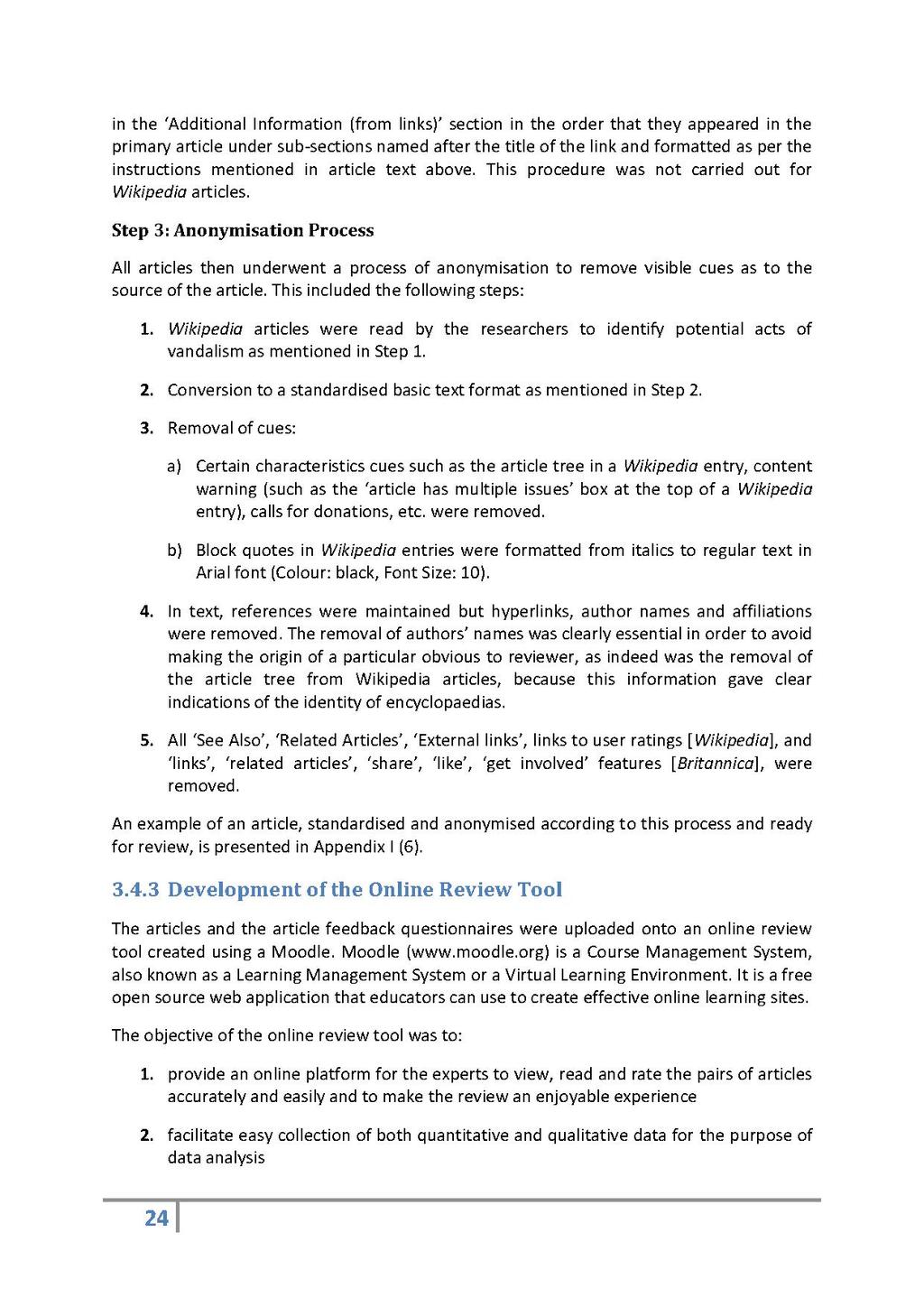in the 'Additional Information (from links)' section in the order that they appeared in the primary article under sub-sections named after the title of the link and formatted as per the instructions mentioned in article text above. This procedure was not carried out for Wikipedia articles.
Step 3: Anonymisation Process
All articles then underwent a process of anonymisation to remove visible cues as to the source of the article. This included the following steps:
- Wikipedia articles were read by the researchers to identify potential acts of vandalism as mentioned in Step 1.
- Conversion to a standardised basic text format as mentioned in Step 2.
- Removal of cues:
- Certain characteristics cues such as the article tree in a Wikipedia entry, content warning (such as the 'article has multiple issues' box at the top of a Wikipedia entry), calls for donations, etc. were removed.
- Block quotes in Wikipedia entries were formatted from italics to regular text in Arial font (Colour: black, Font Size: 10).
- In text, references were maintained but hyperlinks, author names and affiliations were removed. The removal of authors' names was clearly essential in order to avoid making the origin of a particular obvious to reviewer, as indeed was the removal of the article tree from Wikipedia articles, because this information gave clear indications of the identity of encyclopaedias.
- All 'See Also', 'Related Articles', 'External links', links to user ratings [Wikipedia], and 'links', 'related articles', 'share', 'like', 'get involved' features [Britannica], were removed. An example of an article, standardised and anonymised according to this process and ready for review, is presented in Appendix I (6).
3.4.3 Development of the Online Review Tool
The articles and the article feedback questionnaires were uploaded onto an online review tool created using a Moodle. Moodle (www.moodle.org) is a Course Management System, also known as a Learning Management System or a Virtual Learning Environment. It is a free open source web application that educators can use to create effective online learning sites.
The objective of the online review tool was to:
- provide an online platform for the experts to view, read and rate the pairs of articles accurately and easily and to make the review an enjoyable experience
- facilitate easy collection of both quantitative and qualitative data for the purpose of data analysis
24
